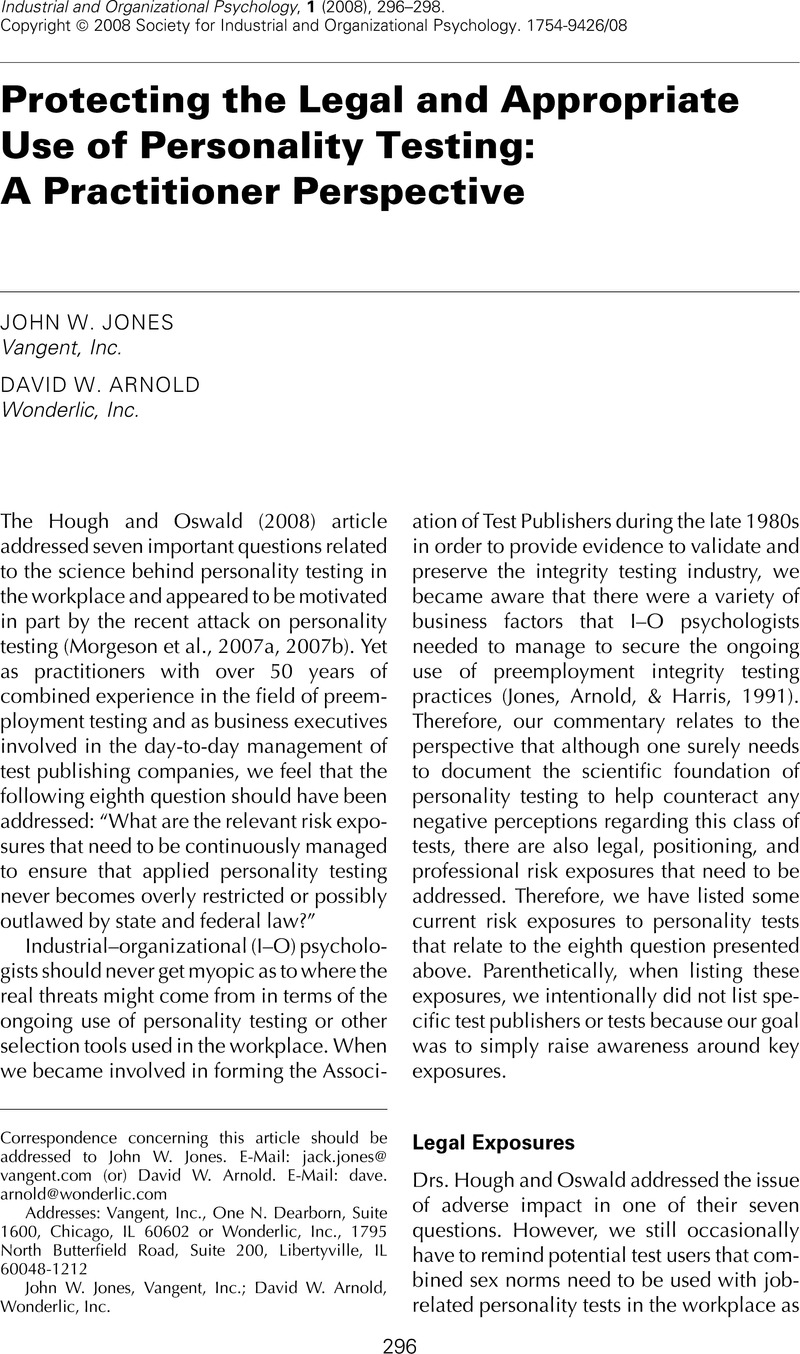Crossref Citations
This article has been cited by the following publications. This list is generated based on data provided by Crossref.
Oswald, Frederick L.
and
Hough, Leaetta M.
2008.
Personality Testing and Industrial–Organizational Psychology: A Productive Exchange and Some Future Directions.
Industrial and Organizational Psychology,
Vol. 1,
Issue. 3,
p.
323.
Christiansen, Neil D.
Quirk, Stuart W.
Robie, Chet
and
Oswald, Frederick L.
2014.
Light Already Defines the Darkness: Understanding Normal and Maladaptive Personality in the Workplace.
Industrial and Organizational Psychology,
Vol. 7,
Issue. 1,
p.
138.
Reynolds Kueny, Clair A.
Francka, Ellen
Shoss, Mindy K.
Headrick, Lucille
and
Erb, Kaitlyn
2020.
Ripple effects of supervisor counterproductive work behavior directed at the organization: using affective events theory to predict subordinates’ decisions to enact CWB.
Human Performance,
Vol. 33,
Issue. 5,
p.
355.





